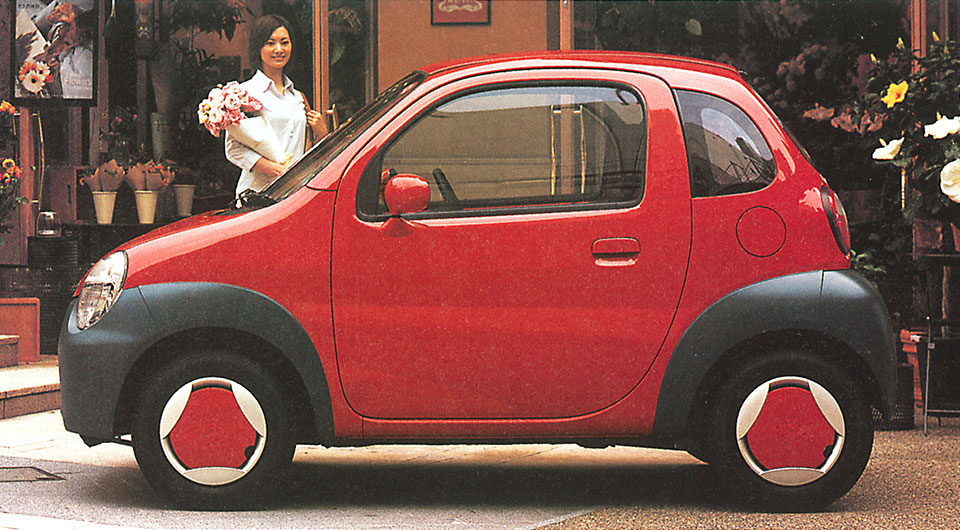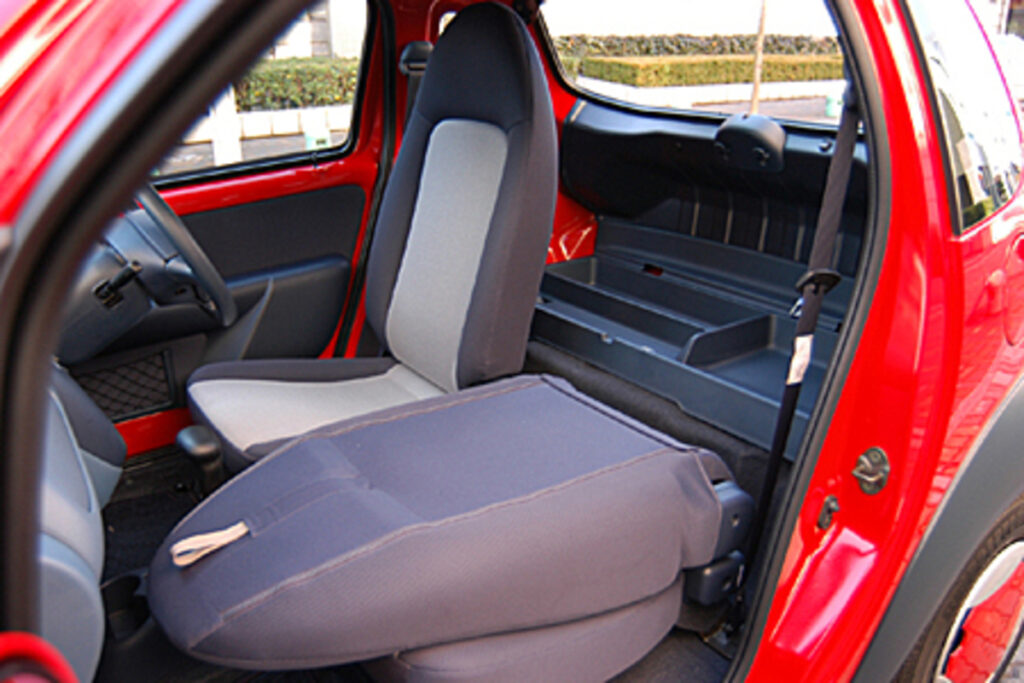The Japanese counterpart of the Smart CityCoupe is the Suzuki Twin, a small two seater car aimed to be used in urban areas. Introduced in 2003, the Twin had an almost identical exterior to the concept car Pu3-commuter that Suzuki showed on the 1999 Tokyo Motor Show. Targeting at young female buyers, the car had a simple and cute design with two round headlights and two round rear lights.
Simplicity was also the key driver for styling in the interior. The gauge cluster was placed in the center with the ventilation controls and radio just under it so there were no buttons scattered across the interior, important for if you want to keep the costs down. After all it had to be an affordable city car.
Being so small, the car still offered some practicality. The egg shaped cabin meant a high roof with good head room. Or what about the interesting feature that the passenger seat that could be folded completely flat to increase the luggage area. That luggage area was quite limited with space for a few shopping bags and had to be accessed via the rear glass hatch. So no rear bootlid was present which meant a high loading lip.
While most kei cars tried to get the maximum dimensions that were allowable by the regulations, the Twin was much shorter with only 2,735 meter in length (kei car limit 3.4 meter length). Besides it unique dimensions, the Twin also was the first kei car with a hybrid powertrain. A 5 kW motor was placed between the engine and transmission to assist the 44 horsepower K6A engine that was also found in the other variants of the Twin.
Upon launch, the base grade was called the Gasoline A and had a 5 speed manual transmission. Then there was the Gasoline B with a 3-speed automatic transmission and additional comfort equipment. And the third grade was the Hybrid B with a 4-speed transmission and the equipped with the comfort features. All versions were front wheel drive only. Strong performance areas of the Twin were its low fuel consumption and small turning radius of only 3.6 meter.
In the following years additional grades were introduced such as the Hybrid A and the V grade for the gasoline, which was a B grade with few less comfort features. The A grade could only be had in white, while the other grades were available in Yellow, Blue or Red. In 2005 there was also a color package grade introduced and here three new colors could be had; Silver, Green Metallic and Blue Metallic.
In the Hybrid grade, the car was almost three times the price of the base grade! As a result the sales of the hybrid were very low but in general the car did not sell as good as Suzuki had planned. In the beginning of 2005 the Hybrid grade got abolished and by the end of 2005 the production had stopped also. In total just over 10000 units had been sold which is a very low sales amount for a small city car.
Click on the picture below to see the Suzuki Twin details and specifications per year such as weight, new price and equipment for each version in the Goo-net.com catalog.








